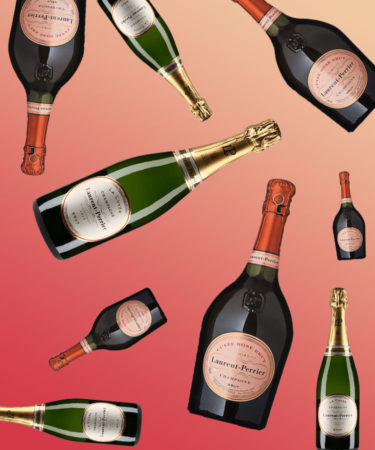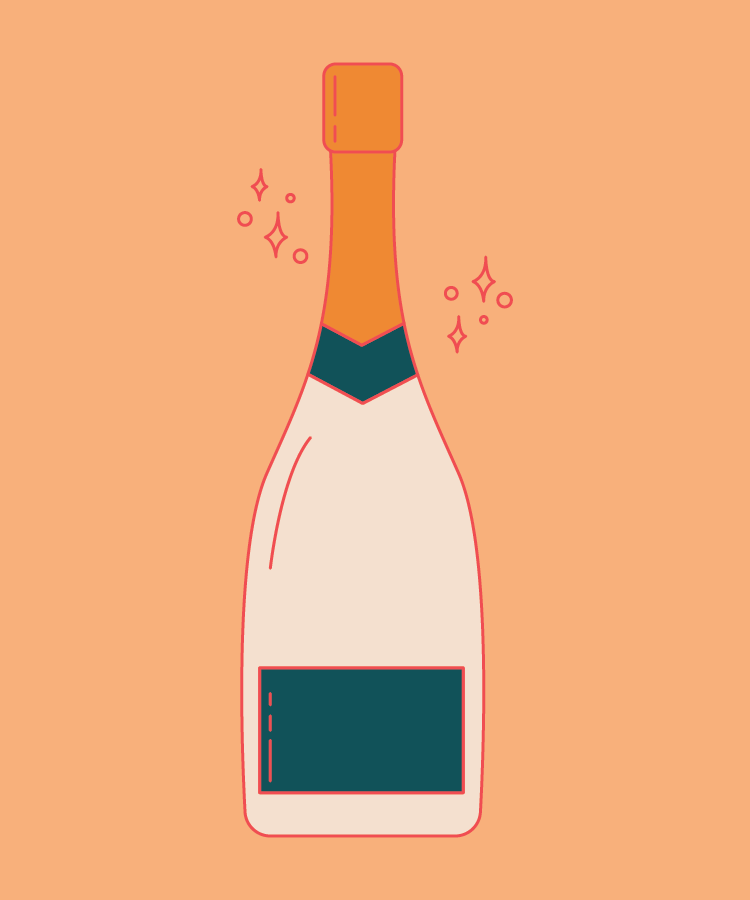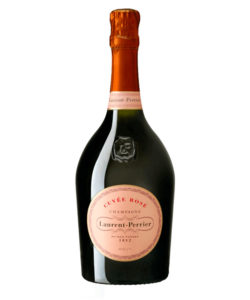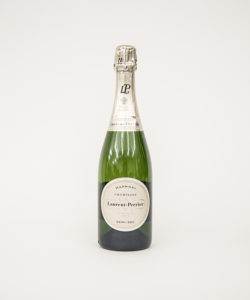Sold in over 120 countries worldwide, Laurent-Perrier is one of Champagne’s leading houses. The brand’s modern-day success is owed, in large part, to the enduring work of Bernard de Nonancourt, who joined the company in 1948. But the house’s story started well over a century prior, long before it was even called Laurent-Perrier.
From French war heroes to pioneering prestige cuvées, here are 11 things you should know about Laurent-Perrier.
The house wasn’t always known as Laurent-Perrier.
The now-Laurent-Perrier Champagne house was founded in 1812 by a former cask maker named André Michel Pierlot. When he died, Pierlot’s son André inherited the business, but, with no heirs of his own, eventually passed ownership to Eugène Laurent, the house’s cellar master.
Laurent later died in a cellar accident, in 1887, leaving his widow Mathilde Emilie Perrier in charge of the business. Perrier combined her and her late husband’s last names to rename the house Veuve Laurent-Perrier.
The de Nonancourt family brought fame and (eventual) fortune to the house.
Struggling to balance the books, Perrier’s daughter Eugénie sold Laurent-Perrier to Marie-Louise de Nonancourt in 1939. De Nonancourt came from a long line of Champagne makers and bought the house to provide a future in the industry for her sons Maurice and Bernard. The de Nonancourt family retains ownership of Laurent-Perrier to this day, but, sadly, only one of Marie-Louise’s sons joined the business.
During World War II, both Maurice and Bernard fought occupying German forces in the French Resistance. Maurice, the elder of the two, was captured by the German army and tragically died in a concentration camp.
Bernard de Nonancourt was a French war hero.
In 1944, after the liberation of Paris, Bernard de Nonancourt served as a sergeant in the French Army’s 2nd Armored Division. His unit was the first to arrive at the Kehlsteinhaus, Hitler’s “Eagle’s Nest,” in the Bavarian Alps. After blowing their way through a number of armored steel doors, the unit discovered a stash of over 500,000 bottles of wine, including hundreds of cases of first- growth Bordeaux, vintage Champagnes, and aged Cognacs. De Nonancourt was later awarded the Croix de Guerre for his wartime service.
De Nonancourt was also a shrewd, hardworking businessman.
In 1945, de Nonancourt returned to Champagne, eager to start work in the family business. Following a three-year apprenticeship in the vineyards, cellar, office, and on the road as a salesman, de Nonancourt was appointed chairman and chief executive of Laurent-Perrier. He was just 28 years old when he started and held the position for 60 years.
During this time, de Nonancourt increased Laurent-Perrier’s sales a hundred-fold, helping the brand become one of the world’s leading Champagne houses. Affectionately referred to by his peers as “Le Grand Bernard,” de Nonancourt passed away in 2010.
Laurent Perrier is the largest family- and female-owned Champagne house.
In 1999, Laurent-Perrier was listed on the French stock exchange, but the de Nonancourt family retained 57 percent of the shares. The house is now run by Bernard’s two daughters, Stéphanie Meneux de Nonancourt and Alexandra Pereyre de Nonancourt.
Laurent-Perrier pioneered the non-dosage category.
In the late 19th century, sweeter, demi-sec Champagnes were popular among French drinkers. Mathilde Perrier, the pioneering widow who renamed the house, preferred a drier style, which was also more popular among British drinkers — a historically important export market for Champagne.
So, in 1889, Perrier created a sugar-free “Grand Vin sans Sucre,” which the brand launched at the Eiffel Tower’s restaurant. More than a century ahead of its time, the style was a precursor of today’s increasingly popular low-dosage sparkling wines. While Laurent-Perrier no longer bottles the wine as Grand Vin sans Sucre, it does offer a non-dosage Ultra Brut, which was introduced in 1981.
Laurent-Perrier keeps things fresh.
Champagne houses blend multiple vintages of base wines to create a consistent “house style” year after year. Laurent-Perrier’s signature style, conceived by Bernard de Nonancourt, aims to provide freshness and elegance in a glass. To do this, its blends are driven by a higher-than-normal percentage of Chardonnay grapes, the least-planted and most expensive in the region.
Laurent-Perrier was also among the first houses to introduce stainless steel fermentation, circa 1950s, which also helps wines maintain a fresh character.
Laurent-Perrier’s prestige cuvée pays homage to France’s “Great Century.”
Bernard de Nonancourt believed nature cannot provide the perfect vintage every year, so, in 1959, he launched Grand Siècle, the brand’s prestige cuvée. Grand Siècle blends base wines from three vintage years and breaks from the regional convention that a house’s most prestigious Champagne should be a vintage wine.
Grand Siècle always comprises 55 percent Chardonnay and 45 percent Pinot Noir grapes, which the house sources exclusively from grand cru vineyards. The cuvée takes its name (which means “Great Century”) from the period of French history during which King Louis XIV reigned.
Laurent-Perrier owns a larger, physical link to the Grand Siècle.
In 1989, Laurent-Perrier bought the historic Château de Louvois, which is located around three miles from the house’s winery and headquarters. Constructed in the 13th century, the château was substantially renovated in the 17th century, when it was owned by the Marquis de Louvois, François Le Tellier. At the height of the Grand Siècle, Le Tellier worked as a chancellor for the Sun King Louis XIV and was involved in building the Versailles Palace.
Cuvée Rosé is Laurent-Perrier’s emblematic wine.
First launched in 1968, the wine is an outlier for rosé Champagnes, which normally blend red and white base wines to achieve a pale pink color. Instead, Laurent-Perrier lightly presses the red Pinot Noir grapes before macerating the must and skins for up to 72 hours in temperature-controlled vats. Following primary and secondary fermentation, the wines age on their lees for a minimum of five years.
Laurent-Perrier’s Alexandra Rosé is equally iconic, but much rarer.
In 1987, Laurent-Perrier launched the Alexandra Rosé. Unlike the Cuvée Rosé, this pink sparkler blends 80 percent white Chardonnay, with 20 percent red Pinot Noir. It is always released as a vintage wine, and only seven iterations have been released to date. The first one, 1982, debuted at the wedding of Alexandra’s de Nonancourt, Bernard’s eldest daughter.
Like Cuvée Rosé and Grand Siècle, all the grapes for Alexandra Rosé come from grand cru vineyards. The wine is aged for at least 10 years before release, providing immense complexity.



